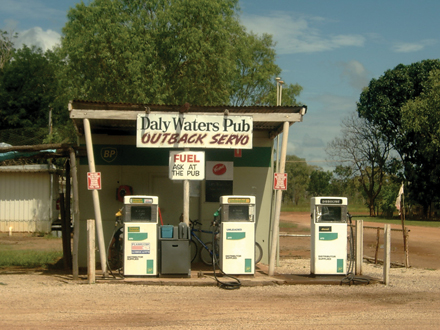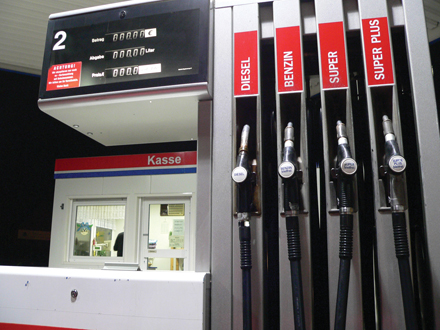By Peter Buckingham
Many franchise businesses need to consider the effects market maturity and subsequent change amongst the other players will have on their future. The type of store that you opened 10 to 15 years ago could be a far cry from what the market demands today.
What can we learn from the oil industry?
My background was from the oil industry, and you don’t have to be Einstein to know it is becoming harder and harder to find a service station these days. The changes have been bought about by quite a few factors over the last 30 years. These include the change to self serve, customers going away from smaller cramped stations to large convenience stores, and the value of the land that many smaller stations were on.

While we can attribute many reasons to the changes, the biggest reason within the oil companies was the need to be more cost efficient in selling petrol.
In looking at service station efficiency, a common indicator that was used was what was each companies’ market share % compared to the % of sites they had in the total market. The drive was therefore to have fewer sites pumping as much volume as possible.
In a mature market, with multiple competitors, and a free price setting system, you come down to a situation that the efficient survive, and the inefficient can no longer afford to remain in business. It becomes a change or perish mentality especially in a market like petroleum where the price you sell the product for is so transparent.
Analyse Your Cost Structure
I believe you need to break your cost structure down and analyse it against that of your industry in these simple terms:
1. Buying or manufacturing costs
2. Head office overheads
3. Retail distribution costs and efficiencies
Whilst you could break this down into smaller segments, let’s start here for now.
1. Buying or manufacturing costs
All businesses must try to remain as competitive as they can in this area. Whilst not my field of expertise, I do note some of our larger clients are now bringing in goods for retail from China and India, and it is always an area that needs continual review. If your COGS is equal or better than your competition, it is a good start!
2. Head office overheads
This is an area that you must see value for money coming out of. I do not believe in a “cut and burn” approach, rather value for money. My oil industry experience was always that in time of low profit, slash the staff, cut training and cut all promotional activity. The long term effect especially of cutting staff and training was always a couple of years down the line where our “new” field staff were out there without the basics, and very costly errors were made. In a franchise business I would see it as prudent to set some KPI’s relating to Head Office staff numbers and total costs as a % of sales, and see how you feel you compare to your competitors. Large companies often have Annual Reports from which you can glean the base information and evaluate.
3. Retail distribution costs
Network Planning should take into account new store opportunities, as well as rationalisation. In the oil industry, a rough guide was to close three poor performing service stations and use the return from the asset sales to build one modern service station. That is why the valuable small inner metropolitan sites have disappeared, and the new sites are large, with the full Convenience Stores, in the middle and outer suburbs of the main capital cities.

Network Classifications and Planning
With many of our clients, we now are working to classify sites as to their suitability to what we see as the longer term marketing requirements. It is then a matter of management decisions to what the Network should look like in five and ten years from now.
It appears obvious to me that one of the largest changes to retail marketing at the moment is the advent of the Home Maker Centre and Direct Factory Outlets.
Many retailers are moving to larger format stores, and then participating in these new Home Maker Centres, which will mean a reduction in the smaller format stores that may have been their traditional offer.
The Home Maker Centre’s and Direct Factory Outlets $ per sq meter rental is normally lower than in a shopping centre or strip, the size of the retail space allows a “full offer”, and the manpower in terms of sales can be significantly lower. Combine this with the overall pulling power of the Home Maker Centre, and we are seeing retailers occupying quickly the new space that is coming to market.
This transition from smaller stores, often in expensive shopping centres or on prime land, into new large format stores can bring about new efficiency in the supply chain, and assist in the bottom line of both the Franchisor and Franchisee.
Summary
As markets mature, what was the original “offer” may no longer be what the customer wants, nor may it still be an efficient way of distributing your product. Strategic Network Planning should be considered on a large scale to not only look at new opportunities, but also to move with the times where necessary, or run the risk of extinction for being too conservative.

Peter Buckingham is the Managing Director of Spectrum Analysis Australia Pty Ltd, the leading Geodemographic and Retail Sales Modelling Company in Australia. Spectrum assists many large retailers and Franchisors in better understanding the retail market from a site and area selection view. Spectrum Analysis was a finalist of Supplier of the Year (2009) for the Franchise Council of Australia awards, an award they are hoping to win this year. Peter is a Fellow of the FCA and a CMC. Peter can be contacted on +613 98150800 or peterb@spectrumanalysis.com.au or via their web at www.spectrumanalysis.com.au.





